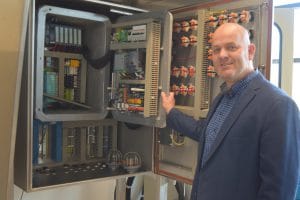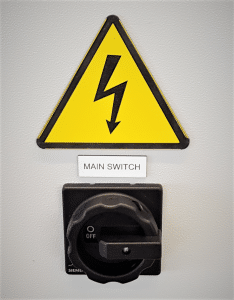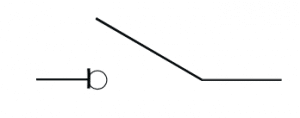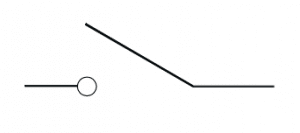 Our engineering manager John Meijer shares his knowledge. Every month, he discusses a different topic in the field of electrical safety. This time his blog is about: main switches.
Our engineering manager John Meijer shares his knowledge. Every month, he discusses a different topic in the field of electrical safety. This time his blog is about: main switches.
Main switches
There’s a lot to write about main switches. Which main switch is suitable for what type of voltage? We often see that this is not taken into account. A main switch designed for VAC should not be applied to VDC. With VDC you will have a larger arc flash, standard VAC switches are often not resistant. Even when you buy a switch that is suitable for VDC, you still need to read the manual carefully. For example, to distribute the arc it is often recommended to use a 4-pole switch for VDC, where both the plus and the minus run through two contacts in series.
Switch or disconnect
 There is a difference between a load switch and a switch disconnector. To secure, the main switch must have a disconnector function. Not every switch may simply be used as a disconnector.
There is a difference between a load switch and a switch disconnector. To secure, the main switch must have a disconnector function. Not every switch may simply be used as a disconnector.
What are the standards?
The NEN-EN-IEC 60204-1: Electrical equipment of machines, indicates that switchers must be fitted to disconnect (isolate) electrical equipment, so that maintenance work can be carried out safely. In addition, the control of the mains disconnector must be easily accessible, somewhere between 0.6 – 1.9 meters above floor height, 1.7 meters is the recommended height. Main disconnectors used as an emergency switch, must be equipped with a red control on a yellow background.
The NEN 1010 (electrical installations for low-voltage) indicates that switch disconnectors must be easily accessible during maintenance, that the switch disconnector can be locked in the ‘off’ position, and that all the poles of the power supply are switched.
The NEN-EN-IEC 61439: Low-voltage switchgear and controlgear assemblies, indicates that the assigned power of switchers should not exceed 80% of the agreed power (In). Meaning, a main switch of 100 Amp, allows to run a maximum of 80 Amp of operating power. This is often forgotten in practice.
Short circuit value
The short circuit value is an important subject, because of the mechanical forces released during a short circuit. The short circuit value of the main switch (Icw) must be able to withstand the short circuits that may occur. Therefore, always ask your client or energy supplier which short circuit value (kA) a panel should be suitable for, before simply selecting the cheapest switch.
User categories
You can’t randomly apply every switch. The switching contacts should be suitable for the type of load you are going to switch. Is it VAC or VDC? Is it an ohmic load or an inductive load, et cetera.
The IEC 60947-3-1 indicates which user categories are applicable. Make sure the switch you want to use, is suitable for the category. An overview of the most common categories:
Alternating current
- AC-15: Switching electromagnetic loads (>72 VA)
- AC-20: Turn on and off without load
- AC-21: Switching ohmic load with moderate overload
- AC-22: Switching mixed ohmic and inductive load with moderate overload
- AC-23: Switching from engine load or other highly inductive load
Direct current
- DC-20: Turn on and off without load (disconnect)
- DC-21: Switching ohmic load with moderate overload
- DC-22: Switching mixed ohmic and inductive load with moderate overload (e.g. shunt motors)
- DC-23: Switching from highly inductive load (e.g. serial motors)
More information?
Do you have any questions about main switches in response to this blog? Please feel free to contact us.



